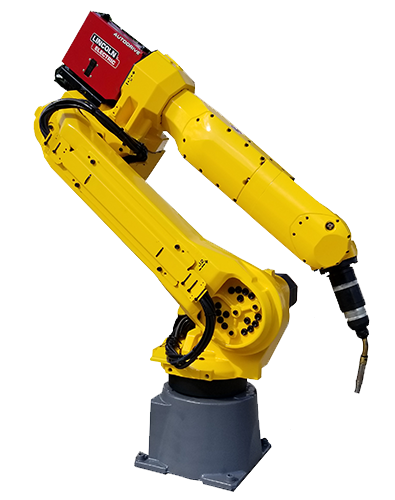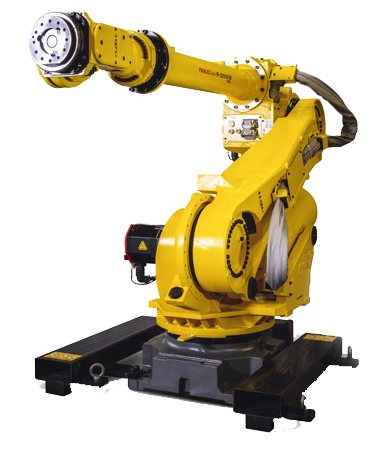Welding robots are the most widely used for industrial automation. Nearly half of all industrial robots are deployed for robotic welding. Arc welding applications account for twenty percent of all robotic welding processes. The speed, accuracy, and repeatability of industrial robots makes them ideal for automating arc welding processes. Manufacturers gain the quality of an expert welder immediately with the implementation of an arc welding robot for a completely optimized welding system.
Arc welding applications are typically automated with a six-axis industrial robot. The robot’s main purpose is to position the torch and workpiece while energy is supplied to the articulated robot from the power supply. Multi-purpose robots were typically used to automate arc welding processes, however, in recent years robotic manufacturers have developed robot models designed specifically for arc welding. Arc welding robots feature a slimmer profile and internalized cabling for more efficient welding. FANUC’s arc welding robots, the Arc Mate series, features the FANUC Arcmate 120ic. While Yaskawa Motoman’s arc welding robots come from several lines including the EA, MA, and VA series. The Motoman VA1400 features an additional 7th axis for increased flexibility and better torch access.
In general, arc welding applications involve permanently joining metals together through the use of electricity. The electricity creates the electric arc needed to heat and melt metals. The following are the types of arc welding applications that can be automated with industrial robots:
- • GTAW - Gas tungsten arc welding is one of the most common robotic arc welding processes. Robotic GTAW is considered to be a precision welding method that is best for detailed welds and can only be used to weld thin metals. The Motoman MA1400 is ideal for GTAW automation, producing clean welds which is especially important for weld seems that will be visible.
- • GMAW - Gas metal arc welding is another popular arc welding process for robot automation. GMAW robots are often deployed when thick metals need to be joined together. The ABB 1600 can weld thick metals in a short amount of time with the GMAW method since a filler wire is melted between the metals to join them together, instead of melting the base metals themselves.
- • FCAW - Flux core arc welding is a versatile welding method. FCAW robots can weld both ferrous and non-ferrous metals using a tubular wire electrode. The advantage of robotic FCAW is that it can be used to weld dirty, rusty, or painted metals, saving time by not needing to clean the metal surface beforehand.
- • PAW - Plasma arc welding is another precision arc welding process for both thin and thick metal welding. PAW involves the use of plasma to join metals together at incredible speeds. Plasma arc welding robots can weld metals with a single pass of the torch, regardless of metal thickness. These robots can also be used for robotic plasma cutting applications with the same EOAT.
- • SAW - Submerged arc welding may be the least common robotic arc welding process, but it is the best for thick plate welding as well as longer welds. SAW is still relatively new to welding automation, with it only getting its start with industrial robots in the last ten years.

